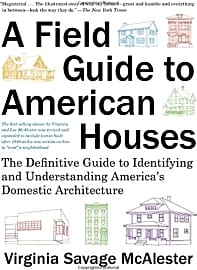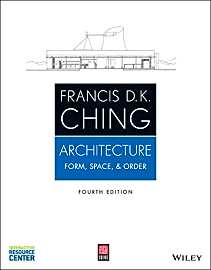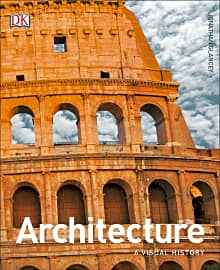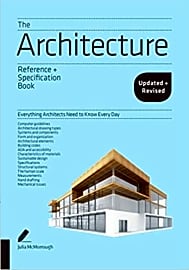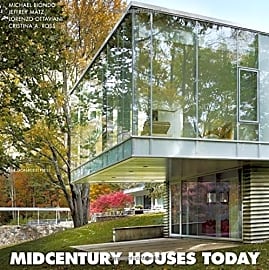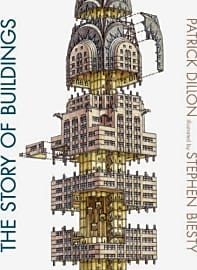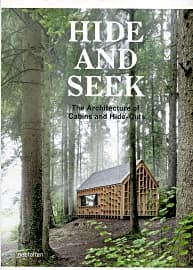The 10 Best Architecture Books

This wiki has been updated 37 times since it was first published in July of 2015. For those studying or working in the field, anything from our selection of architecture books would make either essential reading or a perfect gift. Many of the structures featured in these editions are such stunning and innovative works of art that nonprofessionals who appreciate beauty and design would enjoy them as well, and you'll find choices suitable for youngsters, too. When users buy our independently chosen editorial choices, we may earn commissions to help fund the Wiki.
Editor's Notes
March 31, 2020:
We wanted this list to strike a balance between books ideal for students and professionals and those suitable for the curious youngster, layperson, or teenager considering college. To help even things out, we brought on The Architecture Reference & Specification Book and Architecture: Form, Space, & Order, two highly informative works that are essential for the student, but also helpful for anyone looking to learn more about the ins and outs of the profession. These came at the expense of The Future of Architecture in 100 Buildings and Prefabulous Small Houses, two volumes that are interesting but not nearly as enlightening.
We said goodbye to The SketchUp Workflow for Architecture, a very instructive, yet niche, publication. This book is still worth getting if you are a professional, but we felt it was a bit too specific to merit a spot on this list when compared with the other selections. In its place, we added Architecture: A Visual History, a feast for the eyes that can be appreciated by the layperson, professional, and student equally.
When paired with a good interior design book, Midcentury Houses Today, Hide and Seek, and A Field Guide to American Houses would each make a compelling and extremely illuminating choice. The Story of Buildings is great for piquing the interest of a child, while Latin America in Construction and Seeking New York each focus on geographical locations of interest with plenty of engaging detail. What your aims are will determine the best book for you.
The Architecture Book: Architecture as Art and Literature
Even within each category, you will still have to look about a bit to find that one perfect tome.
Architecture is an almost universally fascinating subject. One needs no understanding for the actual function of a flying buttress to remark on its striking shape; one need not know a Gothic arch from a basic post-and-lintel to appreciate the amazing advances human beings have achieved in the design and construction of edifices in the few thousand years from which we have extant structures. In the grand scheme of history, the journey from Stonehenge to Notre Dame to the Sydney Opera House has been a diminutive span indeed.
While obtaining a deep understanding of architecture is essentially impossible without the completion of years of schooling and advanced degrees followed by plentiful professional plying of the trade, anyone with an interest in buildings as engineering marvels, as works of great beauty, and/or as testaments to a period in history can enjoy reading up on the subject, provided he or she finds the right book.
There are three primary lenses through which the layman can appreciate architecture. The first of these is to see the technical prowess -- the mathematics and engineering -- behind the design; the second approach is to appreciate great architecture for its inherent aesthetic value, seeing a home or building as a work of art; third, one can study the history and development of architecture through time, examining both the effect that the ages had on structures and how certain significant buildings had an impact on the course of history. (Many structures fall into all three categories, with a Roman aqueduct or the Golden Gate Bridge serving as two examples separated by two millennia.)
Many people will of course be able to appreciate more than one of these aspects of architecture, but identifying which focus will most appeal to you (or the recipient of an architecture book as a gift, as applicable) will make your search for the right architecture book easier and more fruitful. Even within each category, you will still have to look about a bit to find that one perfect tome.
In the technical realm, for example, on can find books dedicated to the process of drawing (or sketching) plans for a project or books that are packed with references that provide actual information useful for the working architect or the student. The aesthetic appreciator could spend days studying famous homes, churches, skyscrapers, and so forth -- few books will do justice to beautiful buildings of all stripes, so try to pick a niche (residences of the 20th century, e.g.) and occupy it fully. And for the lover of the history of architecture, some survey-style books can be found that review building throughout the ages, but better still may be a volume dedicated to some distinct era, be it as specific as Midcentury American designs or the Italian Renaissance at large.
The Broad Strokes: Architecture Briefly Defined
The word architecture is primarily used to define one of two things. First is simply the buildings of a given time, space, or style at large. One might hear a remark such as: "The architecture of the Soviets was bland and cold, designed to be functional without care for beauty." Or: "The architecture of New York City reaches skyward both due to the confines of Manhattan and the audacity of the American spirit."
Architecture can also refer to the process of designing a given structure: to the mathematics, engineering, and artful considerations that one or more trained and proficient architects must weigh when designing a building.
More modest examples include simply a well-designed single-family residence with a floor plan conducive to convenience and comfort.
Few endeavors merge the artistic and technical worlds in the same way as architecture. To be a "success," a building must be both aesthetically pleasing and logistically functional. The architect must fit every element a home or building needs -- from staircases to bathrooms to space for wiring and ducts to roofs that properly shed rain or bear snow loads -- into a form that also pleases the eye from without and allows for comfortable, productive existence within. Witness the glorious brick duomo of Florence cathedral -- the largest brick dome in the world -- designed by Brunelleschi in the middle of the 15th century as a crowning example of engineering and artistry working together. More modest examples include simply a well-designed single-family residence with a floor plan conducive to convenience and comfort.
Architecture is so challenging an undertaking because its proper execution requires a working knowledge of so many factors, from the properties of building materials to zoning regulations to the effects of weather and temperature on a structure to the management of a budget. There are, simply put, so many ways for an architect to fail in his or her endeavors. But a great architectural success often stands the test of time.
A Few Recent Architects You Must Know
If there's any chance the subject of architecture might come up at an imminent dinner party, client dinner, or on a date, you will be well-served to know at least a thing or two about a few of the world's most renowned recent architects. Having at least a cursory knowledge of the work of these three men should at least help you design a conversational scaffold on which you can climb to other topics.
Having at least a cursory knowledge of the work of these three men should at least help you design a conversational scaffold on which you can climb to other topics.
Ludwig Mies van der Rohe is most often known simply as Mies (pronounced Meese). This German-born American architect worked for many decades during the 1900s, creating both some of the most iconic homes and buildings of 20th century America. These include skyscrapers like Chicago's IBM Plaza and modernist private residences such as the famed Farnsworth House. Few architects could bring such grace to towering edifices and one-floor, one-room retreats alike.
Frank Lloyd Wright lived from 1867 to 1959, and during his nine decades of life, he created some of the most striking homes the world has ever seen. Wright's long career spanned multiple major architectural movements, including the so-called Prairie Style, the Craftsman school, Japanese-influenced designs, and decidedly modern structures, such as the iconic residence Fallingwater, a home built directly over a natural waterfall. While his personal life was a series of divorces, distance from his children, rumor and gossip, his prowess as an artistic architect was never in doubt; Wright was already designing full homes well before his 25th birthday.
Frank Gehry is considered by many to be the greatest living, working architect. A master of lyrical, undulating edifices often wrapped in shimmering metals, he has redefined the bounds of materials and form many times over. Look no further than the celebrated Walt Disney Concert Hall in Los Angeles or the Guggenheim Museum in Bilbao to see his work in its both modern and timeless glory.


